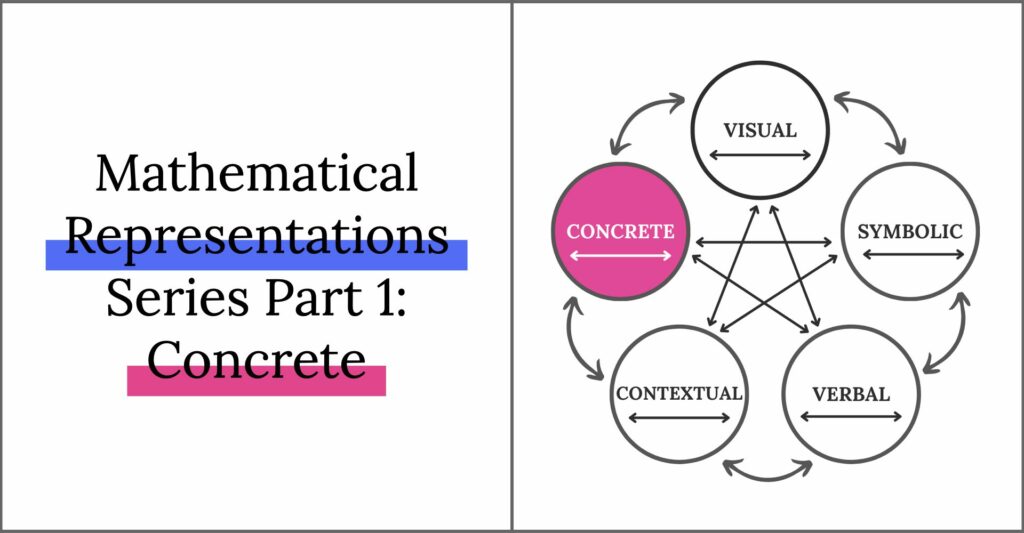
I know I often talk about different math topics and skills, but today I want to enter into a discussion about how we represent those skills. Representations are how our brain communicates mathematical thoughts and concepts. The one we will be discussing today is likely a familiar one: Concret Representation.
The Concrete-Pictorial-Abstract Model
Many folks are familiar with the Concrete-Pictorial-Abstract model of representation (seen below), or at least the idea behind it. You may also have heard it called the CRA Model, or Concrete-Representational-Abstract Model.
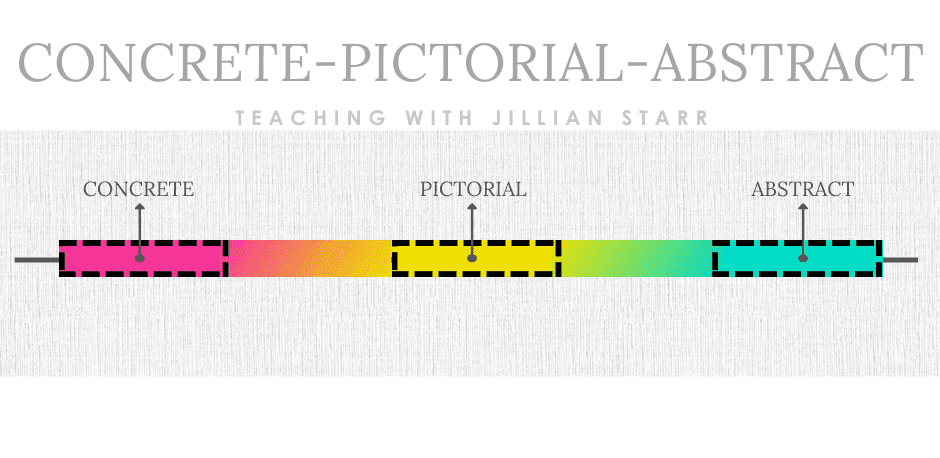
This is the model I was taught in college. I learned Piaget’s stages of cognitive development and the importance of moving from pre-operational to concrete-operational thinking, and how that applied to teaching math with manipulatives.
There is so much good that can come from teachers learning the CPA Model, but there are also a lot of misconceptions that arise when it is not deeply understood.
People often misinterpret this model as linear. This leads them to believe that there is a starting point and an end point. Unfortunately, folks then begin to also view these as “stages” and look at the representations in isolation.
Why is this a problem? Well, the magic of mathematical representations is not when they are created in isolation, but when we make connections BETWEEN them! (Don’t worry, I promise to talk about this magic more as we go through this series.)
Concrete Representation
Okay, let’s dive into Concrete Representation! Concrete representation is when a math concept is introduced with manipulatives. So, when students are working with manipulatives, this is the representation we are focusing on.
Examples
We are helping students make meaning of abstract concepts by giving them a visual of that concept to manipulate. Some examples include:
- Using base-ten blocks to show the relationship between different place values as they relate to base-ten
- Working with Unifix cubes to understand the commutative property of addition.
- Utilizing Geoboards to learn about partitioning shapes
- Exploring Cuisenaire rods to talk about addend pairs
Let’s take a closer look at an example, shall we? (I always learn best when given examples and visuals.) In this example, let’s imagine that our students are learning about addition, and we have selected double-sided counters as our manipulative.
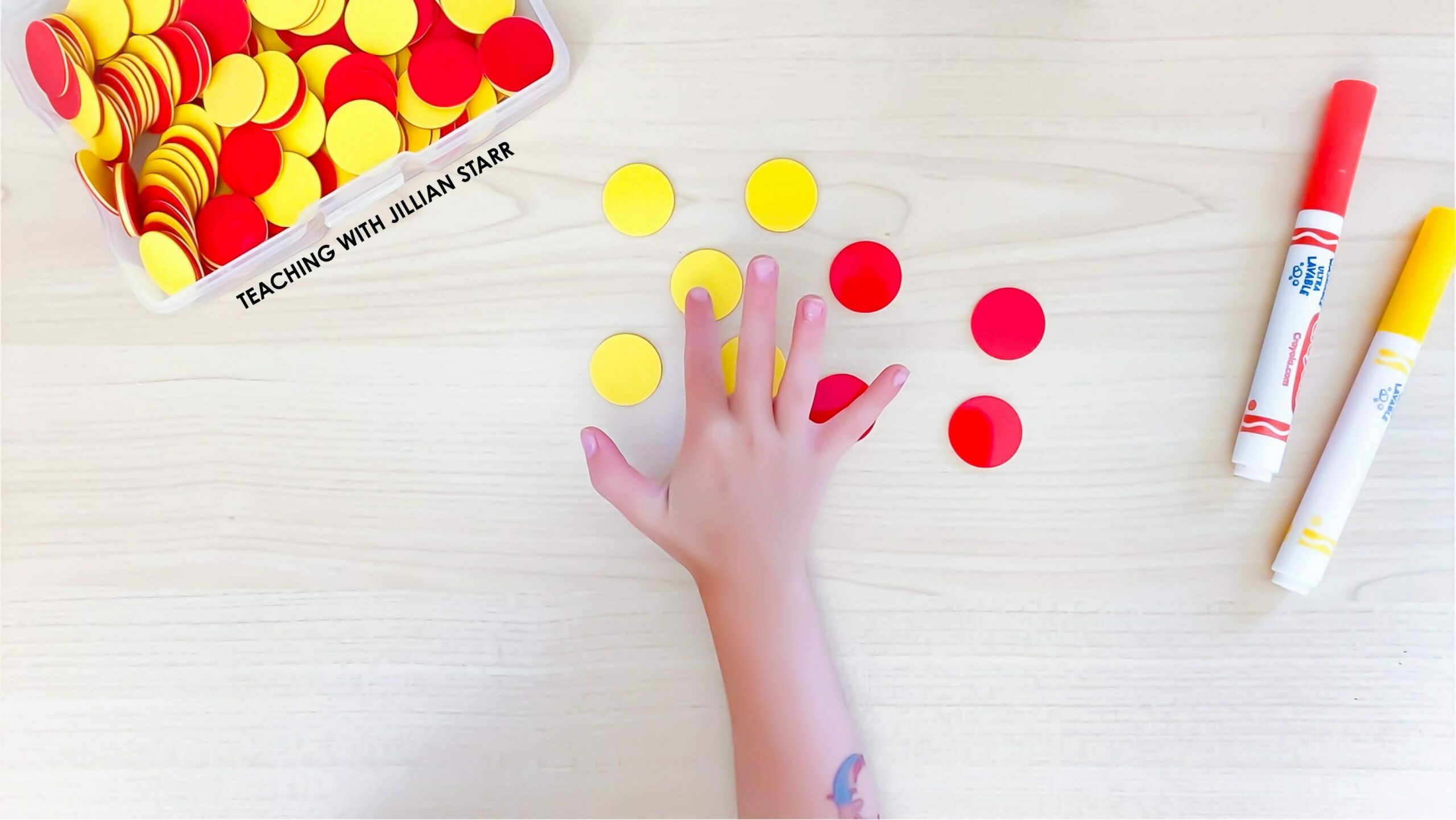
Students take a handful of counters from the container on the table. They work to count the two different colors and then determine how many counters are there in total.
The Role Manipulatives Play
Manipulatives are playing an important role here! They are supporting students in SO MANY ways:
- Providing a scaffold for 1:1 correspondence
- Allowing students to touch each counter, and keep track while counting
- Helping students discern the two different addends by color
- Encouraging students to see the two parts AND together as a whole
The abstract concept of addition becomes tangible because students have a visual representation of parts and a whole.
Connecting Two Concrete Representations
Now, I mentioned earlier that the magic of mathematical representations is not when they are created in isolation, but when we make connections BETWEEN them! Since this is the first part of this series, we haven’t talked about any of the other representations, but fear not! We can still talk about making connections.
How? Well, student understanding can be deepened even when connecting a single representation to itself. What does that even mean? LOL. Stay with me! I promise I’ll explain.
Example
If students are successful with the counter representation, we can introduce a second manipulative to help deepen their understanding. Perhaps in this case we use different colored connecting cubes.

Again students show two parts, where there are 5 of one color and 4 of the other. Students understand that there are 9 cubes in total.
Then, we can connect this concrete representation to their previous concrete representation. If we go back to the original two-sided counters, we can help students compare and connect the two different ways they concretely showed 5+4=9.
These are the connections that will deepen student understanding! Being able to translate between these two models is where the magic is going to happen!
What’s Up Next?
This series is going to dive deep into each of the representations discussed in Lesh’s Translation Model, and then we are going to put it all together so we can make a big impact on your math teaching this year. I hope you’re as excited as I am! (Feel free to let me know in the comments!)

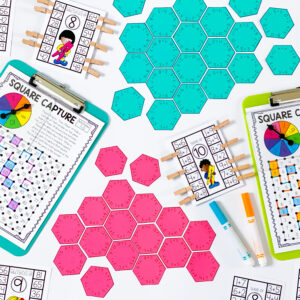

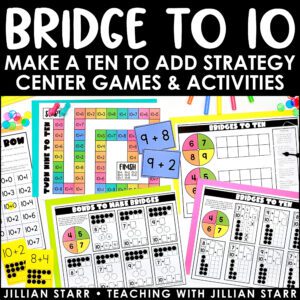

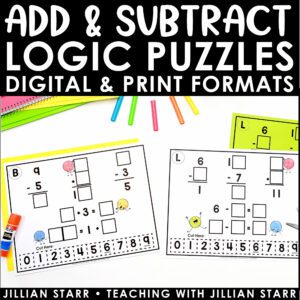

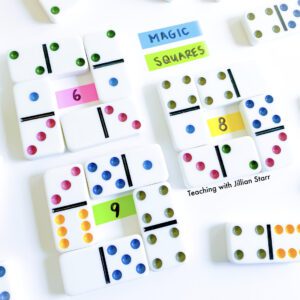
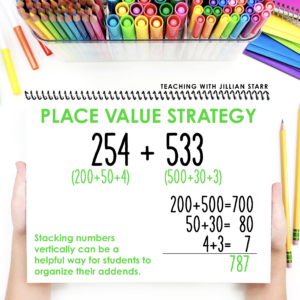


Leave a Comment